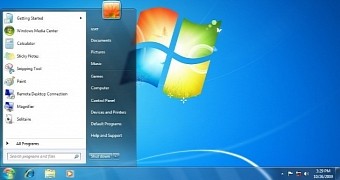The clock is ticking for Windows 7: Microsoft will stop offering support for its 2009 operating system in exactly one year, so customers still running it have just 365 days to upgrade.
The first Patch Tuesday of 2020, which takes place on January 14 next year, is the moment when Microsoft will ship the last security updates for Windows 7, really marking the end of an era.
Windows 7 was the most successful operating system it ever launched, and it continues to be a widely-used platform even though we’re approaching its end of support.
At this point, Windows 7 still has close to 36 percent market share, which means, as I said recently, that there’s a good chance it would become the second Windows XP. In other words, in one year when Microsoft retires the operating system, I expect Windows 7 to remain a popular choice on desktop computers across the world, despite the obvious security risks.
This is exactly what happened in the case of Windows XP, which was retired on April 8, 2014, at a time when it was still running on more than 25 percent of PCs.
WHAT END OF SUPPORT MEANS
Windows 7 with Service Pack 1 installed reached the end of mainstream support on January 13, 2015, and is now projected to exit extended support next year.
The end of mainstream support basically means that Windows 7 no longer received new features and other optimizations, as extended support comes down to security patches exclusively.
In other words, after the January 2020 deadline, Microsoft will stop shipping security updates as well, meaning that Windows 7 will be left unguarded in case vulnerabilities are discovered.
The risks of exploits aimed at vulnerabilities in Windows 7 will increase substantially, especially because Windows versions share a large part of the code, and many of the discovered security flaws affect more than just a specific product. As a result, Windows 7 users could be exposed whenever this happens, and given everyone expects this OS version to remain highly popular even after the end of support, cybercriminals will make it one of their top targets.
For Microsoft, the Windows 7 end of support is an opportunity to focus almost entirely on Windows 10. While Windows 8.1 keeps getting updates as well, its market share is substantially smaller than the one of Windows 7, so after January 2020, almost all Microsoft’s efforts would be aimed at Windows 10.
WHAT TO DO NEXT
Without a doubt, the next step for everyone is to upgrade computers to a supported Windows version.
Needless to say, Windows 7 won’t just stop working overnight. In fact, applications will continue running on Windows 7 for a long time after the January 2020 milestone, and most of them will even get updates regularly just like the OS would still be supported.
This could convince many to stick with Windows 7 even longer, but sooner or later, upgrading to a newer Windows version would still become the only way to go.
Microsoft recommends customers to switch to Windows 10 during the remaining months until the January 2020 target, and enterprises should begin planning this transition in advance, as their migration typically requires more resources and takes more time.
If upgrading isn’t possible before the deadline, the only option is to restrict access as much as possible on systems still running Windows 7. Of course, the web access would be a door left open to hackers, and this would be a right place to start for IT admins looking to secure their devices.
Security products can indeed help block potential exploits, but the more time would pass after the January 2020, the more difficult it would become for software developers to maintain their apps on Windows 7 as well. So eventually, upgrading to Windows 10 is pretty much the only option.

 14 DAY TRIAL //
14 DAY TRIAL //